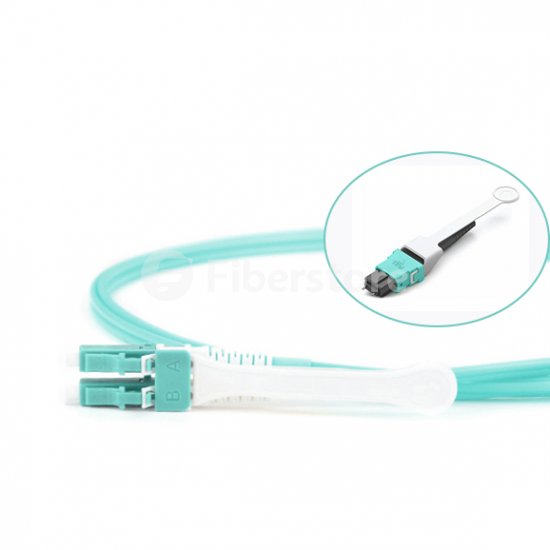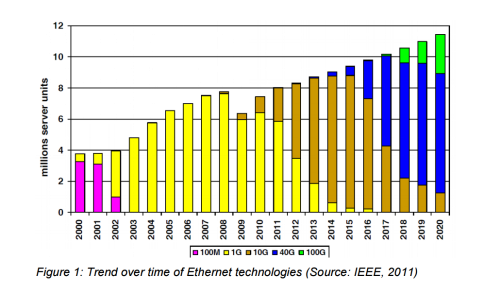The increasing demands of bandwidth and high speed drive the emergence of 40 GbE, and even up to higher in the future. And the high-speed transmission requires high-density data center as the increasing created data need amount of cables and devices which take a lot of space and cost. Data centers have to achieve ultra-high density in cabling to accommodate all this cabling in the first place. Multimode fiber optics is the medium of the future for satisfying the growing need for transmission speed and data volume over short distances. Ultra-parallel connections involve tougher requirements in terms of the components and the handling of the connectors. The MPO/MTP technology has proven to be a practical solution. This article provides introductory information on MPO/MTP technology in 40 GbE.
Parallel optical channels with multi-fiber multimode optical fibers of the categories OM3 and OM4 are used for implementing 40 GbE. The small diameter of the optical fibers poses no problems in laying the lines, but the ports suddenly have to accommodate four or even ten times the number of connectors. This large number of connectors can no longer be covered with conventional individual connectors. That is why the 802.3ba standard incorporated the MPO multi-fiber connector for 40GBASE-SR4. It can contact 12 or 24 fibers in the tiniest of spaces. Next part describes this type of connector.

The MPO connector (known as multi-fiber push-on and also as multi-path push-on) is a multi-fiber connector defined according to IEC 61754-7 and TIA/EIA 604-5 that can accommodate up to 72 fibers in the tiniest of spaces, comparable to an RJ45 connector. MPO connectors are most commonly used for 12 or 24 fibers. Eight fibers are needed for 40 GbE, which means four contacts remain non-interconnected in each case. MPO connectors and MTP (mechanical transfer push-on) connectors are no longer terminated on site because of the delicate multi-fiber structure and narrow tolerances involved. MPO/MTP connectors are therefore sold already terminated together with trunk cables. With this arrangement, customers have to plan line lengths precisely but are also assured top quality and short installation times. To achieve lower tolerances and better attenuation values, the American connectivity specialist US Conec developed the MTP connector. It has better optical and mechanical quality than the MPO. An MTP connector consists of a housing and a separate MT ferrule. The MT ferrule is a multi-fiber ferrule in which the fiber alignment depends on the eccentricity and positioning of the fibers and the holes drilled in the centering pins. The centering pins help control fiber alignment during insertion. Since the housing is detachable, the ferrules can undergo interferometric measurements and subsequent processing during the manufacturing process.
MPO/MTP connectors and fiber cables as the important part of the multi-fiber connection system, are designed for the reliable and quick operations in data centers. Fiberstore manufactures and distributes a wide range of MTP/MPO cable assemblies including trunk cables, harness cables and cassettes (or patch panels). And we also offer other kinds of transceiver and cable choices for your 40GbE applications, for example, HP JG709A 40GBASE-CSR4 QSFP+ transceiver, and Juniper QFX-QSFP-DAC-3M QSFP+ to QSFP+ passive copper cable, etc. Futhermore, customized service such as optional fiber counts, cable types and lengths are available.
